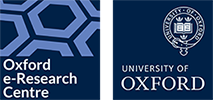21 Nov 2019
Manuscript Experts seek ‘Holy Grail’ of Linked Open Data at Symposium in Philadelphia
Experts from across Europe and North America will converge at the 12th Annual Lawrence J. Schoenberg Symposium on Manuscript Studies in the Digital Age
In November, experts from all over Europe and North America will converge at the 12th Annual Lawrence J. Schoenberg Symposium on Manuscript Studies in the Digital Age to discuss historic and current approaches to data linkage regarding manuscripts and manuscript research, under the title “Hooking Up”.
Dr Toby Burrows of the Oxford e-Research Centre will present an overview of the work done by the Mapping Manuscript Migrations project to build a Linked Open Data environment for exploring data relating to more than 215,000 medieval and Renaissance manuscripts. This year the Symposium explores the connections between historic and current approaches to data linkage in regard to manuscripts and manuscript research and will feature sessions highlighting projects that are advancing linked data technologies for manuscript researchers, such as Mapping Manuscript Migrations.
The two year collaborative project is linking disparate datasets from Europe and North America to provide an international view of the history and provenance of medieval and Renaissance manuscripts. Researchers will be able to analyse and visualize the aggregated data at scales ranging from individual manuscripts to thousands of manuscripts.
Funded by the Trans-Atlantic Platform under its Digging into Data Challenge, Mapping Manuscript Migrations is led by the University of Oxford (Oxford e-Research Centre and Bodleian Library) in collaboration with Aalto University (Helsinki), the Institut de recherche et d’histoire des textes (Paris), and the University of Pennsylvania.
“Mapping Manuscript Migrations is an important step towards a global knowledge graph for manuscript research,” says Dr Burrows. “It provides researchers with the tools and the data to ask complex questions about provenance histories on a uniquely large scale.”
Colleagues from partner institutions will also be discussing issues around data transformation, data modelling, and the benefits of the combined data for manuscript researchers. The full programme of the symposium is available on the Penn Libraries website.




